An understanding of the fundamentals of electric motor speed control is indispensable for practically all activities where such machinery is employed, in that it plays a crucial role in energy consumption, operational efficiency, and equipment life span. This holds whether the motor being used is an AC or a DC one. This article belongs to the ‘Electric Motor Control category’ and explains the main principles of AC and DC motor speed control, sheds light on how these machines function, and presents their industrial applications. Starting from the very ‘beginning’, i.e., the importance of variable frequency drives and their relation to voltage and current levels, the reader will gain remarkable insights that will enhance their understanding of the topic. This means that the readers will be informed about the innovations that form part of the motor control systems’ mechanisms and methodologies.
Introduction to AC Motor Speed Control
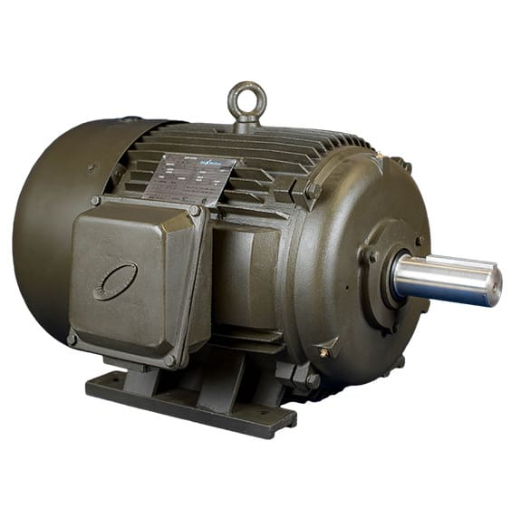
The regulation of AC motor speeds involves controlling the motor’s speed according to application requirements, aiming to increase efficiency and improve performance. This is usually done by using a Variable Frequency Drive (VFD). The VFD does this by changing the frequency and voltage levels of the power it supplies to the motor. Consequently, and with the same aim, it provides means for precise control of speed, thereby saving energy and extending the motor’s life by reducing mechanical work. Today, the regulation of AC motor speed by this method is needed in industrial complexes such as manufacturing plants, HVAC systems, and conveyor operations, due to their inherent efficiency and adaptability.
Importance of Speed Control in Electric Motors
Controlling the speed of electric motors is essential for improving performance, energy efficiency, and operational reliability in various applications. By controlling the motor’s speed correctly, energy consumption can be significantly reduced, resulting in lower operational costs and promoting sustainability. A case in point is the HVAC (Heating, Ventilation, and Air Conditioning) systems, where intricate speed control assures adequate air flow and temperature regulation, resulting in little energy wastage. Likewise, in plants that manufacture using conveyor belts, controlling the motor’s speed offers nearly exact production rates and efficiently reduces mechanical stress, thereby prolonging the equipment’s service life. The coming of age technology, such as intelligent motor controllers and IoT-based systems, further boosts the performance through the control of speed that becomes one with the monitoring of each motor’s status in real time and automation that is hassle-free at the same time, thereby making the control of the speed of electric motor a must in the present technological scenario.
Overview of AC Motors and Their Applications
AC (Alternating Current) motors, which are very easy and reliable to use, have the highest rate of application in the electric motor industry and are prime examples of its versatility. These motors work by converting electric energy into mechanical energy through the interaction of magnetic fields created by the coils in the motor. The two main types of motors, induction motors and synchronous motors, are the most widely used. Induction motors, known for their robust design and efficiency, are highly reliable and are used in various applications, such as household appliances like washing machines and industrial machinery like pumps and compressors. The synchronous motors, which have the great advantage of excellent speed control, are being used for applications such as robots and conveyor systems.
The capacities of AC motors have significantly increased due to recent technological developments. The motor’s entire working speed can be easily controlled using variable frequency drives (VFDs), which also save energy. Additionally, IoT-enabled systems provide real-time monitoring and predictive maintenance. One example of this is the commercial HVAC industry, which critically depends on sophisticated drives that reduce energy usage by automatically matching motor speed to load requirements. Moreover, the areas of renewable energy and wind turbine systems are the ones that use AC motors almost entirely, and the reason behind maintaining better output with nearly a hundred percent efficiency. Therefore, the reliability, adaptability, and technological advancement are together keeping the AC motors as the backbone in all industries of today.
Types of AC Motors
| Type of AC Motor | Key Features | Applications |
|---|---|---|
| Induction Motor | No external power for rotor | Industrial machinery |
| Synchronous Motor | Constant speed regardless of load | Power generation |
| Single-Phase Motor | Operates on single-phase supply | Household appliances |
| Three-Phase Motor | High efficiency, balanced operation | Factories, heavy-duty equipment |
| Servo Motor | Precise control of position and speed | Robotics, CNC machines |
| Stepper Motor | Rotates in discrete steps | Printers, 3D printers |
| Universal Motor | Works with AC and DC supply | Power tools, vacuum cleaners |
Understanding AC Motor Operations
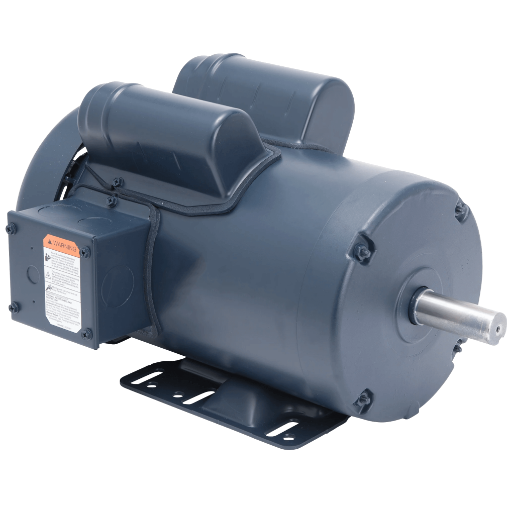
AC motors work by transforming electric energy into mechanical energy via the effects of magnetic fields. If a stator of a motor is energized, it will produce a rotating magnetic field. As a result, the rotor will see this interaction and create, thereby, its own field that is magnetic. It is the stator field in motion that causes the rotor, along with its field, to hold the system together and transmit power by torque. The point is that the rotor has to turn to create the torque. The running speed of an AC motor is regulated by the frequency of the AC power supply and the motor’s design, making it suitable for a variety of applications where either a constant or variable speed is required.
Basic Principles of AC Motor Functionality
When it comes to efficiency, durability, and adaptability, AC motors are the best choice for industrial applications. The industrial machinery, HVAC systems, conveyor belts, electric vehicles, and household appliances are all dependent on the AC motors, showing how versatile they can be. The latest technologies have significantly increased their performance, especially in terms of energy efficiency and control precision. The use of variable frequency drives (VFDs), for example, has made AC motors’ speed control capabilities more versatile, resulting in reduced energy consumption and better meeting specific operational requirements. Besides this, the use of modern materials and designs has raised the reliability and longevity of AC motors, thus making them a key feature of mechanical and electrical engineering. These trends indicate a continuous technological evolution of AC motor technology to meet the needs of a highly operational and eco-friendly world.
Key Components of AC Motors
| Key Component | Description |
|---|---|
| Stator | Stationary part generating magnetic field. |
| Rotor | Rotating part producing mechanical energy. |
| Windings | Conductive coils creating electromagnetic force. |
| Bearings | Support rotor movement with reduced friction. |
| Shaft | Transfers mechanical energy to the load. |
| Frame | Provides structural support and housing. |
| Air Gap | Space between rotor and stator for function. |
| Cooling System | Keeps motor temperature within safe limits. |
| Terminal Box | Houses electrical connections for power. |
| Core | Enhances magnetic field efficiency. |
How Speed is Measured in AC Motors
The importance of AC motors’ velocity is mainly determined by the frequency of the motor power and the motor poles. The formula for the synchronous speed indicates this:
Synchronous Speed (RPM) = (120 × Frequency) / Number of Poles
A motor on a 60 Hz, 4 Pole power supply system would have a synchronous speed of 1800 RPM, for instance. In the practical world, however, you will observe that the existing AC motor will be running a bit to the right of the synchronous speed because of the slip. This term, slip, is the difference between the synchronous and motor speeds. Slip is a crucial element in torque generation for induction motors and is usually denoted in percentage.
Modern devices like tachometers, frequency analyzers, and motor controllers with digital monitoring systems are frequently used to adjust and monitor motor speed with great accuracy. This makes it possible to operate motors correctly and economically in various industrial and commercial applications, thus keeping maintenance costs down.
Speed Control Methods for AC Motors
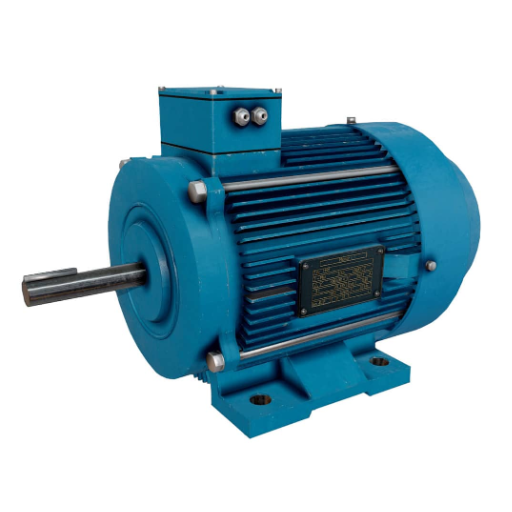
Voltage Control
The motor’s voltage can be changed to manipulate the torque and speed. This method is straightforward yet not so effective for precise speed control.
Frequency Control (V/f Control)
One of the most reliable methods of maintaining motor speed control is by adjusting the supply frequency. Variable Frequency Drives (VFDs), which are commonly used for this purpose, offer both efficiency and accuracy combined.
Pole Changing
Changing the number of pole pairs can alter the synchronous speed of motors with multiple-winding connections. This method is often used to provide discrete speed levels as required by the application.
Rotor Resistance Control
Another widely used method of changing the speed of an induction motor is to introduce resistance to its rotor, which in turn makes the motor run slower. Nonetheless, this method is still not the most efficient and is more suited to outdated motor types rather than new installations as seen today.
Slip Ring and Brush Control
This adjustment, applicable to slip-ring induction motors, involves modifying resistors in the rotor circuit and is generally used for heavy-duty applications requiring variable speeds.
Variable Frequency Drive (VFD) Technology
Variable Frequency Drive (VFD) technology is characterized as an effective and versatile method for motor speed control through adjusting the frequency and voltage being delivered to the electric motor. Even minute parameter changes provide the VFDs with the capability of smooth acceleration and deceleration, reduced energy wastage, and improved process control. The latest VFDs focus on modern features such as real-time monitoring, overload protection, and programmable settings that adapt to different application tasks as needed.
Moreover, it is worth mentioning that VFDs are essential because they help reduce physical wear and tear by offering soft and controlled starts. Consequently, the mechanical stress on the equipment will be lessened. Among the sectors that hugely profit from VFD applications are the manufacturing, HVAC systems, and wastewater treatment sectors, since this technology helps to achieve perfect energy and operational efficiency. Research finds that by installing VFDs, the total energy expenditure can be reduced by 20% to 50% in most cases. VFDs are both very flexible and easy to integrate with technology, so they could never be out of the picture in the modern motor control field, given the undeniable progress of technology.
Pulse Width Modulation (PWM) Techniques
The Pulse Width Modulation (PWM) technique is key in controlling the voltage and frequency of the variable frequency drives (VFDs) output. By continuously interrupting the voltage supply, it generates a waveform similar to a sine wave for the motor’s operation. The modern VFDs feature advanced PWM techniques like Sinusoidal PWM (SPWM) and Space Vector PWM (SVPWM), which have brought tons of benefits like higher efficiency, less harmonic distortion, and smoother motor performance compared to the traditional methods. On the other hand, real-time monitoring and control of torque and speed are the sweet fruits of power electronics offered by this moistened earth, conserving energy and extending the active years of upstream and downstream machinery. The semiconductor advances have opened the door to previously unavailable higher switching frequencies, which in turn mean less noise and easier integration into countless industrial applications. Those improvements go ahead and make PWM the cornerstone of energy-efficient motor control solutions.
Variable Voltage Control Methods
Variable voltage control is being used as one of the most effective methods to manage the motor. The current passing through the motor winding can be varied by changing the voltage supplied to the motor, which, in turn, can smoothly vary the motor’s speed and torque. The energy-saving feature of this control is definitely an advantage over those that use electronic switching of resistance values to vary the motor current.
Variable voltage control has seen recent advancements, specifically in the implementation of digital controllers and feedback systems. The dynamic adjustment of voltage levels that such systems can carry out not only helps with load demands but also improves efficiency and reduces energy loss. Also, the literature shows that the method of modern variable voltage, with its ability to minimize power ripple and thermal stress on the motor’s shaft, has resulted in better motor performance and longer life. The technology is so popular in industries like manufacturing, robotics, and HVAC that it has become a source of well-tuned operations and reduced operational costs.
AC Motor Speed Control Techniques
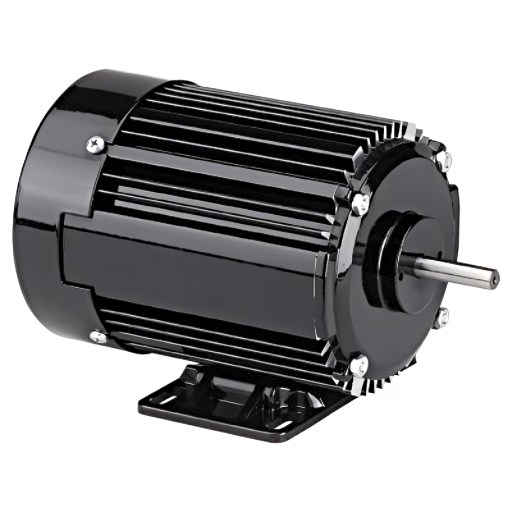
Variable Frequency Drives (VFDs)
In terms of variable voltage control, VFDs are the most familiar to people as the most common method for managing the speed of AC motors. Their goal is to modulate the frequency and voltage of the motor supply, allowing for speed adjustment within the required range. Such a method not only promotes power and motor performance savings but also consistently provides energy-efficient means of operation.
Pole Changing
In certain AC motors, winding configurations are made adjustable, allowing the speed to be changed by switching the number of poles. This technique is one of the most effective yet the least flexible.
Resistance Control
The speed of motors with wound rotor can be controlled by putting a resistance in the rotor circuit. Yet, the method is not very energy-efficient and is mainly used with the old system.
Voltage Control
Another way to control speed is to vary the voltage fed to the motor. Although this technique is quite simple, it can result in lower output efficiencies and higher temperatures if not adequately controlled.
Direct Control of Motor Speed with VFDs
Variable Frequency Drives (VFDs) are one of the most energy-efficient and precise methods to control motor speed. VFDs work by altering the frequency and voltage of the power fed to the motor, making it possible to have a smooth control of speed over a broad range without any efficiency loss. This technological advancement not only reduces power consumption costs but also eliminates the noise associated with throttling, which negatively impacts the machine’s lifespan.
The introduction of modern VFD technology has brought several advantages, including the capability to monitor in real time, perform predictive maintenance, and connect to IOT systems. These combined features make VFDs very suitable for industrial applications, delivering not only top performance but also the capability to adapt to changes in load requirements instantly. It’s worth mentioning that energy savings of up to 30-50% are possible by installing VFDs in the motor system, especially for pumps and fans, where operating at different speeds is beneficial. Thus, in total, VFDs present a proficient and robust remedy for maximizing motor performance, simultaneously abating energy consumption and operational costs.
Using Inverters for Speed Adjustment
Today’s inverters are motor speed control devices that can change their frequency output and hence the speed of an electrical motor. This development can be observed to be a very suitable device, especially in such industrial fields that rely on energy-saving and longetivity of the equipment. Today’s more advanced inverters have a real-time monitoring system and a control system, which guarantees better performance and diagnostics. Moreover, it is stated under the new studies that inverters can also lower energy usage to a certain extent; this statement is applicable to the most efficient applications like the above-mentioned conveyor systems, HVAC systems, and industrial mixers, leading to achieving the best performance possible.
Detailed Comparison of Different Control Methods
| Control Method | Key Features | Advantages | Applications | Limitations |
|---|---|---|---|---|
| Volts/Hertz Control | Simple implementation | Cost-effective, easy to use | Fans, pumps | Limited efficiency at low speeds |
| Vector Control | Precise control over motor torque | High efficiency, dynamic control | Industrial machinery | Requires complex algorithms |
| Direct Torque Control | High-speed torque control | Superior performance, no feedback devices | Cranes, robotics | High computational demand |
| Scalar Control | Operates at steady state | Good for low-performance tasks | Small motors | Limited dynamic performance |
| Sensorless Vector Control | Uses motor model for control | Eliminates need for encoders | Wind turbines, conveyors | Accuracy varies with conditions |
| PID Control | Proportional-integral-derivative tuning | Stable, versatile control | HVAC systems, power grids | Requires frequent tuning |
| Adaptive Control | Adjusts to changing conditions | Excellent for variable systems | Advanced robotics, aerospace | Complex programming required |
| Fuzzy Logic Control | Non-linear problem handling | Works in uncertain environments | Automated systems | Computationally intensive |
| Model Predictive Control | Predicts future system states | Optimal performance over time | Chemical processes, energy | Heavy computational load |
Factors Influencing Speed Control in AC Motors
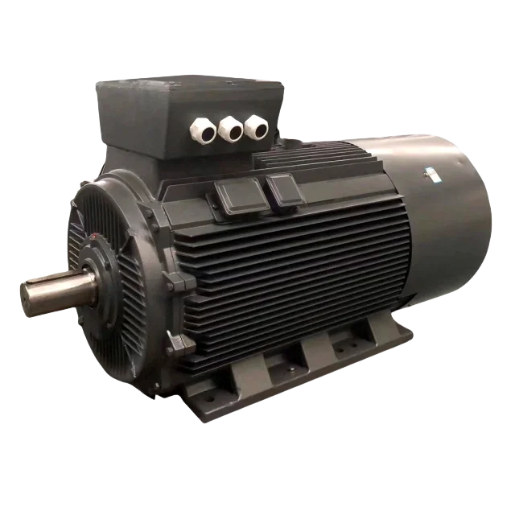
- Input Voltage – Variations in the voltage supplied to the motor can directly influence its speed. Thus, speed is directly proportional to voltage in some situations.
- Frequency of Power Supply – The motor speed is dictated, to a great extent, by the frequency of the AC power supply, as speed is proportional to frequency.
- Load Conditions – Changing the load attached to the motor would cause speed change fairly if the motor does not have a feedback control system.
- Type of Motor – There are two types of motors as far as DC motors, the synchronous and induction motors and they have such basic differences. The endowment of speed makes control through voltage and frequency the only issue.
- VFD (Variable Frequency Drive) – A VFD can manipulate the supplied voltage and frequency to the motor in order to control the speed very precisely.
Load Conditions and Their Impact on Speed
The load applied to the AC motor plays a major role in determining its operational speed. It is usual that heavier loads make the motor draw more current to keep the torque the same and that results in slight drops of speed, particularly with an induction motor. The example is that the more load the induction motor has, the more slip there will be between the synchronous speed of the motor and the rotor turning speed. This happening is causing a small speed drop, which is a common sight in induction motors when loaded.
Nevertheless, synchronous motors will always turn at the same rate, regardless of whether the load is minimal, provided that the voltage, frequency, and systems are stationary. Conversely, using such motors under greater loads may cause the process to lose its harmony and the motor to stop. Heat effects must also be considered; motors under prolonged heavy loads may heat up, which can affect motor efficiency and performance. The understanding of these load behaviors is fundamental in applications that require exact and efficient motor speed control.
Voltage and Frequency Relationships in Speed Control
The relationship between voltage and frequency is crucial in controlling electric motor speed and plays a significant role, particularly in variable frequency drive (VFD) systems. Typically, the synchronous speed of the motor is directly proportional to the frequency of the power supply; this means that increasing or reducing the frequency will correspondingly increase or decrease the speed of the motor. To maintain the motor’s efficiency and torque, it is necessary to adjust both the voltage and the frequency, ensuring that the magnetic flux in the motor remains at the optimum level. In other words, controlling the Volts per Hertz (V/Hz) ratio is a common safeguard to operate the motor within the safety and efficiency envelope, thus preventing issues like overheating or unnecessary power losses.
In the present scenario, VFDs have become so advanced that they utilize algorithms to dynamically adjust power balance and frequency, allowing precise control of the motor’s performance. This method is essential for industries where regulating speed and saving energy are central parts of the operation. Moreover, observing the voltage and frequency relationships has proven to be invaluable in detecting deviations, which in turn determine the machine’s operational reliability and, consequently, extend the motor’s lifespan. The complete understanding of these basic principles raises proficiency to the point where the design and implementation of robust motor control systems can be applied in every type of practical situation.
Environmental Considerations in Motor Speed Control
The use of efficient electric drive systems is crucial, as they are one of the primary electricity consumers in industry. It is essential to closely monitor energy consumption by reviewing all possible energy consumers in the plant, with a particular focus on the energy used by the electric motors. The installation of variable frequency drives (VFDs) enables the motor speeds to be adjusted to the loads, thus reducing energy loss due to unequal consumption. This leads to cost reduction and, at the same time, a decrease in the power sector’s contribution to global warming.
In addition, better motor technologies, such as super-efficient motors or permanent magnet synchronous motors (PMSMs), have been an even further step towards reducing energy losses. When paired with some intelligent control systems, those motors enhance overall efficiency and minimize environmental effects as well. The assessment of motor systems during their lifecycle should also be considered, with the top priority being to ensure that the components and materials are correctly recycled and disposed of. Through the environmentalist approach, motor speed control technologies contribute to the global effort to minimize carbon footprints and enhance the eco-friendly attributes of industrial and commercial applications within the sustainability initiative.
Reference Sources
A review on soft computing techniques used in induction motor drive application
Summary: This review explores the application of soft computing techniques, such as neural networks, fuzzy logic, and genetic algorithms, in controlling induction motor drives.
A review on variable speed control techniques for efficient control of single-phase induction motors: evolution, classification, comparison
Summary: This study reviews variable speed control (VSC) techniques for single-phase induction motors (SPIM). It classifies and compares different VSC methods, including their evolution and application in energy-efficient motor control.
Frequently Asked Questions (FAQs)
What are the different methods for AC motor speed control?
Control of the AC motor speed can be achieved using one of the following techniques: variable frequency drives (VFDs), voltage control, and resistance control. The VFDs are the most favorite method because of their ability to provide speed control by changing the frequency of the input AC power. Voltage control by an AC motor controller, which sets the voltage to the motor, is another method of influencing the motor’s speed. Furthermore, pulse-width modulation (PWM) can be applied by varying the voltage, making it an effective way to control speed, particularly for induction motors. Each method offers different benefits, making them well-suited for diverse applications depending on the required speed range and load characteristics.
How does a variable frequency drive (VFD) control the speed of an AC motor?
By changing the frequency and voltage supplied to the motor, the VFD takes control of the speed of an AC motor. Such kinds of things are nothing new in the industry today. You can still come across this ability, especially on the job, if you are at the right place and at the right time. Moreover, the VFD, by simply adjusting the frequency and voltage supplied to the AC motor, can maintain the voltage phase with the motor, thus ensuring that frictional, pressure, and potential energy losses are minimized at all times during motor operation.
What role does pulse width modulation play in motor speed control?
An essential and widespread technique for controlling the speed of a motor is pulse-width modulation (PWM). This is done by varying the width of the pulses in a signal fed to the motor, allowing the average power delivered to be controlled. The motor’s speed is one of the parameters that can be controlled effectively by changing the voltage level when the duty cycle of the PWM signal is modified. This method is very effective for both AC and DC motors since it combines accuracy in speed control with the avoidance of excessive heat generation. Thus, PWM is a very popular technique in modern AC drives, and it is essential in the areas where robust regulation of speed is a must. It can also significantly reduce energy consumption and losses during operation.
Can an AC motor controller also be used for DC motors?
AC motors require specific controllers for speed and operation control, whereas those for DC motors come in various types. For DC motors, the common controllers are those with the capability to handle variable DC voltage for speed adjustment. However, specific current controllers can work with both AC and DC motors all the same, although their operation schemes differ. To exemplify, the DC motor controller would employ pulse width modulation techniques, while the AC motor controller would focus on manipulating the frequency and voltage of the input AC supply. Thus, selecting the right controller is essential and largely depends on the motor type.
